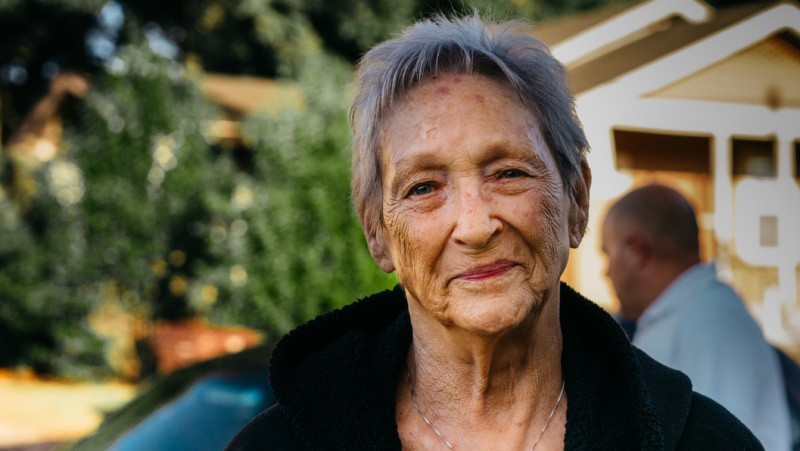Arizona’s food hardship rate increased slightly in 2012 according to a new report from the Food Research and Action Center (FRAC). In 2012, more than one in five Arizona households (20.9%) reported not having enough money to buy the food they needed during the previous twelve months for themselves or their family. This ranks Arizona 14th worst in the country in food hardship rate, up from 15th worst with a 20.5% food hardship rate in 2011. Since food hardship first began being tracked in 2008, Arizona has consistently had high rates, with 20.8% in 2010; 20.5% in 2009; and 18.8% in 2008. Nationwide, food hardship dipped to 18.2% in 2012, a 2.2% decrease from the 2011 rate, the highest rate ever recorded.
“Unfortunately, these new food hardship rates show Arizona is still struggling with the lingering effects of the recession,” said Ginny Hildebrand, president and CEO of the Association of Arizona Food Banks. “With uncertainty around possible sequestration and other budget cuts, it continues to be a very tough time for Arizona households struggling with hunger.”
The report on food hardship includes data by state, Metropolitan Statistical Area (MSA) and Congressional District. Because the data is for 2012, it does not reflect the new Congressional Districts and boundaries that have been established. Food hardship rates are a reflection of the current economic condition, and help quantify the inability of a household to afford enough food for all its members at any point during the year.
Examining food hardship by Congressional District, two Arizona districts ranked in the top 100 nationwide. District 4—which covers central and south Phoenix, along with much of west Phoenix—ranked the 6th worst in the country in 2011-12 with nearly one third of residents suffering from food hardship (30.1%). This was a slight decrease from 2010-11 (31.8%). Still, such a high food hardship rate reveals the hunger struggle in our large urban areas, where high poverty, unemployment and food deserts conspire to give residents fewer options to feed their families. District 7, which includes Yuma and much of southwestern Arizona including parts of Tucson, ranked 76th with a 21.2% food hardship rate. This was also a slight decrease from 2010-11 (22.7%). Complete Arizona Congressional District rankings for 2011-12:
| DISTRICT | REPRESENTATIVE | 2011-12 FOOD HARDSHIP RATE | NATIONAL RANK | 2010-11 FOOD HARDSHIP RATE | NATIONAL RANK |
| 1 | Paul Gosar | 20.1% | 102 | 21.1% | 120 |
| 2 | Trent Franks | 14.6% | 280 | 16.7% | 266 |
| 3 | Ben Quayle | 17.7% | 173 | 20.0% | 161 |
| 4 | Ed Pastor | 30.1% | 6 | 31.8% | 5 |
| 5 | David Schweikert | 11.4% | 387 | 12.7% | 378 |
| 6 | Jeff Flake | 13.0% | 340 | 15.6% | 302 |
| 7 | Raúl Grijalva | 21.2% | 76 | 22.7% | 88 |
| 8 | Ron Barber | 13.7% | 312 | 15.7% | 297 |
Two Arizona MSAs ranked in the top 50 nationwide for food hardship. For the entire Phoenix-Mesa-Scottsdale MSA, the food hardship rate for all households was 17.8% in 2011-12, ranking 40th out of the 100 largest MSAs. This was an improvement from the 2010-11 food hardship rate of 19.3%, and looks even better compared to the 2009-10 peak of 20.0%, indicating that the struggling District 4 may be recovering somewhat.
However, the Tucson MSA took a turn for the worse, as the food hardship rate for all households increased to 18.3% in 2011-12, up from 18.0% in 2010-11, giving it the 30th highest food hardship rate out of the 100 largest MSAs. Still, looking at the bigger picture, the Tucson MSA has a lower food hardship rate than it did in 2009-10 (19.4%) or 2008-09 (18.8%).
The FRAC food hardship report analyzes survey data collected by Gallup. The ability to provide such localized data and such up-to-date data comes from Gallup’s partnership with Healthways, interviewing 1,000 households per day almost every day since January 2, 2008 as part of the Gallup-Healthways Well-Being Index project. For this report, more than 352,800 people were asked in 2012 whether there were times over the preceding year that they did not have enough money to buy food they or their family needed. Click here to read the full report. (PDF)
The Gallup survey question on food hardship is very similar and comparable to one posed by the U.S. Census Bureau and analyzed by the U.S. Department of Agriculture in its official measure of food insecurity, but because of sample size, Gallup provides a closer, more localized and more recent look at food hardship.

